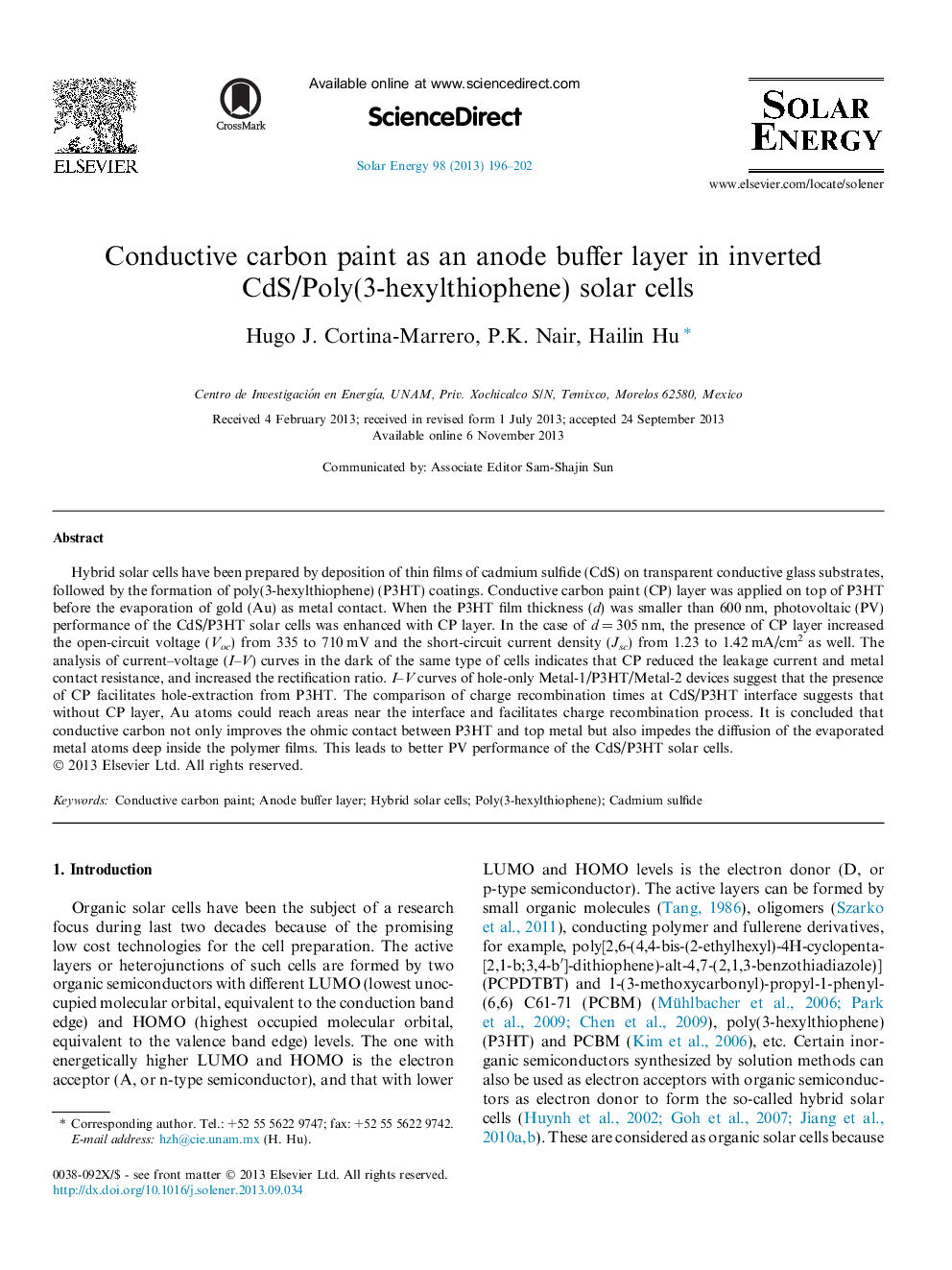| کد مقاله | کد نشریه | سال انتشار | مقاله انگلیسی | نسخه تمام متن |
|---|---|---|---|---|
| 1550281 | 998090 | 2013 | 7 صفحه PDF | دانلود رایگان |

• Carbon paint reduces contact resistance between poly(3-hexylthiophene)(P3HT) and Au.
• The diffusion of Au into P3HT layer can be inferred from charge recombination times.
• The use of carbon paint reduces the Au atom diffusion into P3HT thin films.
• The photovoltaic performance of CdS/P3HT has been improved by use of carbon paint.
Hybrid solar cells have been prepared by deposition of thin films of cadmium sulfide (CdS) on transparent conductive glass substrates, followed by the formation of poly(3-hexylthiophene) (P3HT) coatings. Conductive carbon paint (CP) layer was applied on top of P3HT before the evaporation of gold (Au) as metal contact. When the P3HT film thickness (d) was smaller than 600 nm, photovoltaic (PV) performance of the CdS/P3HT solar cells was enhanced with CP layer. In the case of d = 305 nm, the presence of CP layer increased the open-circuit voltage (Voc) from 335 to 710 mV and the short-circuit current density (Jsc) from 1.23 to 1.42 mA/cm2 as well. The analysis of current–voltage (I–V) curves in the dark of the same type of cells indicates that CP reduced the leakage current and metal contact resistance, and increased the rectification ratio. I–V curves of hole-only Metal-1/P3HT/Metal-2 devices suggest that the presence of CP facilitates hole-extraction from P3HT. The comparison of charge recombination times at CdS/P3HT interface suggests that without CP layer, Au atoms could reach areas near the interface and facilitates charge recombination process. It is concluded that conductive carbon not only improves the ohmic contact between P3HT and top metal but also impedes the diffusion of the evaporated metal atoms deep inside the polymer films. This leads to better PV performance of the CdS/P3HT solar cells.
Journal: Solar Energy - Volume 98, Part C, December 2013, Pages 196–202